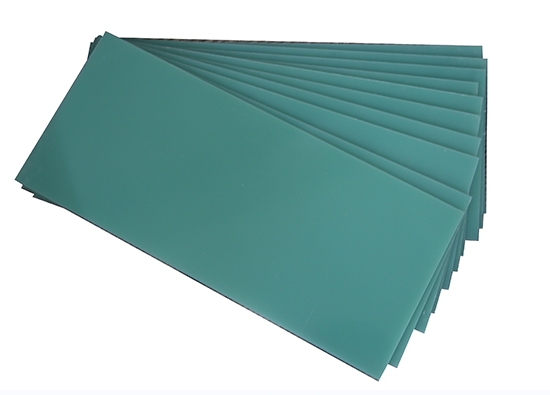- 17
- Oct
The meaning of FR4 in FR4 epoxy glass fiber board
The meaning of FR4 in FR4 epoxy glass fiber board
FR4 is a code for the grade of flame-retardant materials. It represents a material specification that the resin material must be able to extinguish by itself after burning. It is not a material name, but a material grade. Therefore, it is currently used in general circuit boards. There are many types of FR-4 grade materials, but most of them are composite materials made of so-called Tera-Function epoxy resin, Filler and glass fiber.
NEMA yog cov khoom siv tau teev tseg los ntawm Asmeskas Cov Koom Haum Hluav Taws Xob Hluav Taws Xob. Tus qauv IEC sib xws yog EPGC202. Tsis muaj tus txheej txheem hauv tsev sib haum rau nws.
The closest domestic standard is 3240 epoxy laminated glass cloth board. The corresponding IEC standard of 3240 is EPGC201, and there is only a difference in flame retardancy between EPGC201 and EPGC202. Therefore, it can be simply considered that FR-4 is an improved product of 3240 with enhanced flame retardancy.
FR4 epoxy glass fiber board, the main material is imported prepreg. The colors are white, yellow and green. It still has high mechanical strength at room temperature of 150℃. It has good electrical performance in dry and wet state, flame retardant, used in electrical and electronic Insulation structural parts in other industries are carefully manufactured with imported raw materials, domestic presses and standard technology; the main specifications are 1000*2000 mm 1020mm*1220mm, because of the advantages of raw materials, it guarantees high quality, low price, and timely delivery. It has a solid customer base at home and abroad and enjoys a high reputation.
Application characteristics sharing of FR4 epoxy glass fiber board
1. Ntau hom ntawv. Ntau yam resins, kho tus neeg sawv cev, thiab hloov kho cov txheej txheem tuaj yeem hloov kho kom tau raws li qhov xav tau ntawm ntau daim ntawv thov ntawm daim ntawv, thiab qhov ntau tuaj yeem yog los ntawm qis viscosity mus rau qhov siab melting point khib nyiab.
2. Yooj yim kho. Xaiv ntau yam sib txawv ntawm cov neeg sawv cev kho kab mob, cov txheej txheem epoxy tuaj yeem yuav luag tau kho hauv qhov kub ntawm 0 ~ 180 ℃.
3. Muaj zog nplaum. Cov pab pawg hydroxyl ncov qaumteb qabteb thiab cov ether bonds hauv cov saw hlau molecular ntawm epoxy resins ua rau nws nplaum rau ntau yam tshuaj. Kev nqaim ntawm epoxy resin yog qis thaum kho, thiab kev nyuab siab sab hauv tsim tawm me me, uas tseem pab txhim kho lub zog ua kom khov.
4. Tsawg shrinkage. Cov tshuaj tiv thaiv ntawm cov tshuaj epoxy cob thiab cov tshuaj tua kab siv yog ua los ntawm cov tshuaj tiv thaiv ncaj qha ntxiv lossis lub nplhaib-qhib polymerization cov tshuaj tiv thaiv ntawm epoxy pawg hauv cov tshuaj molecule, thiab tsis muaj dej lossis lwm yam khoom hloov pauv tau tso tawm. Piv nrog cov polyester tsis txaus satin thiab cov phenolic resins, lawv qhia qis qis qis (tsawg dua 2%) thaum kho.
- Mechanical properties. The cured epoxy resin system has excellent mechanical properties.

